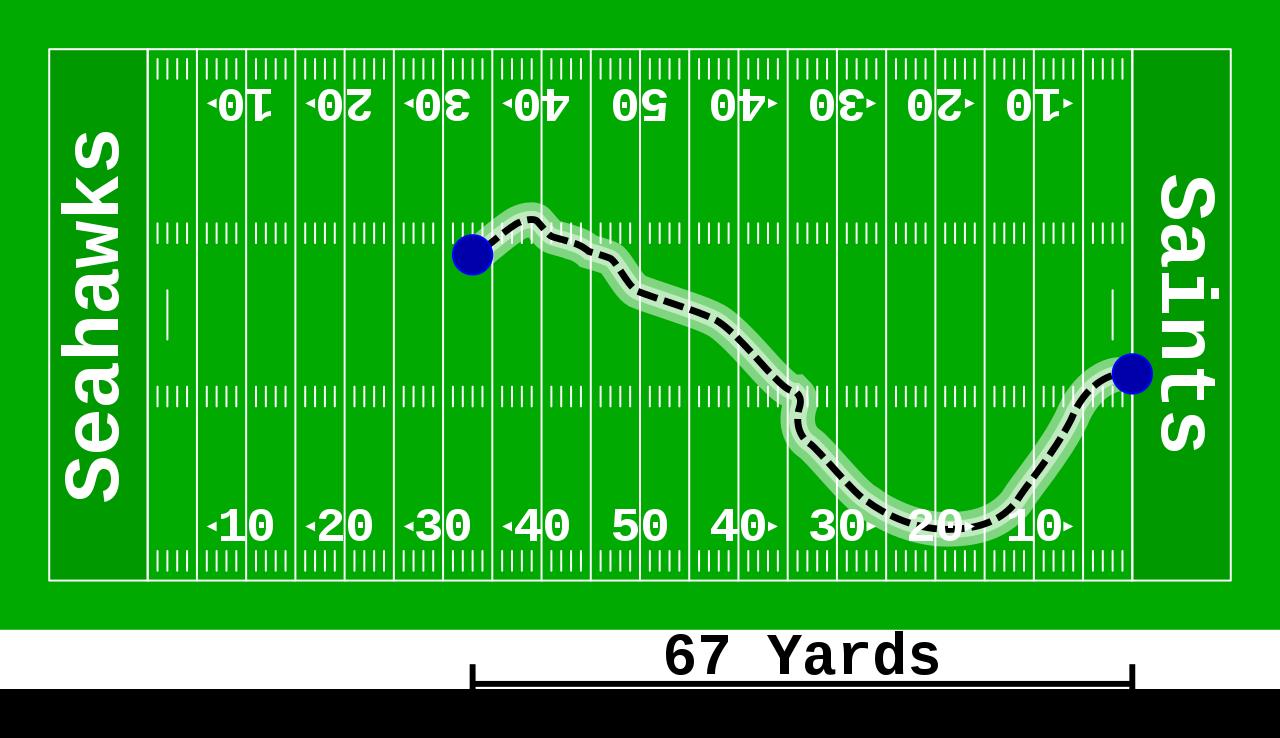Marshawn Lynch Beast Quake
The NFL has a long and fascinating past. Some events are legendary, and fans and players will always remember them.
One unforgettable moment occurred on January 8, 2011, during an electrifying playoff game between the Seattle Seahawks and the New Orleans Saints. The focal point of this seismic event was Marshawn Lynch’s jaw-dropping 67-yard touchdown run, forever known as the “Beast Quake.”
As the clock ticked down in the fourth quarter at CenturyLink Field in Seattle, the Seahawks found themselves in a tense battle against the defending Super Bowl champion New Orleans Saints. The raucous home crowd, renowned for their fervor and passion, reached a crescendo of excitement as their team clung to a narrow lead. Little did they know that they were about to witness a moment that would not only define the game but also leave a seismic imprint on NFL history.
The stage was set for Marshawn Lynch, the powerhouse running back affectionately known as “Beast Mode,” to etch his name into the annals of football greatness. Facing a critical third-and-long situation, Lynch took a handoff from quarterback Matt Hasselbeck and burst through the line of scrimmage. What transpired next was nothing short of miraculous.
Lynch, known for his combination of power, agility, and refusal to be tackled quickly, embarked on a mesmerizing journey down the field. The New Orleans Saints’ defense seemed powerless to stop him as Lynch evaded tackles and stiff-armed defenders and showcased an uncanny ability to maintain balance in the face of adversity. The roar of the crowd grew louder with each yard gained, and the energy inside the stadium reached a fever pitch.
At this moment, the seismic phenomenon known as the “Beast Quake” was born. As Lynch crossed the goal line, completing his remarkable 67-yard run, the cheers and stomping of the jubilant Seahawks fans reverberated through the stadium with an intensity that was palpable. Unbeknownst to many, the vibrations from the exuberant crowd were so powerful that they registered on nearby seismographs, capturing the seismic activity created by the sheer force of the celebration.

Scientists later revealed that the energy unleashed by the Seahawks faithful was equivalent to a small earthquake, thus coining the term “Beast Quake.” The seismic tremor wasn’t just a metaphorical expression of the crowd’s enthusiasm; it was a tangible, measurable event that highlighted the profound impact of sports on communities and the visceral connection between fans and their team.
Marshawn Lynch’s iconic run and the ensuing Beast Quake became a symbol of the Seahawks’ resilience and the unyielding spirit of their fanbase. The moment encapsulated the essence of “Beast Mode” — a player refusing to be stopped, overcoming obstacles with sheer determination and power. The seismic activity recorded during the Beast Quake added a surreal and almost mystical dimension to the already legendary run, turning it into an indelible chapter in NFL folklore.
The Beast Quake secured a crucial victory for the Seahawks in that playoff game and left an enduring legacy. It remains a testament to the unique bond between a team and its fans, a connection that can transcend the boundaries of the playing field and resonate throughout an entire city. The Beast Quake wasn’t just a touchdown run; it was a seismic expression of the unbridled passion and unwavering support that define the essence of sports fandom.
How Large was the Beast Quake?
the Marshawn Lynch Beast Quake was 2.0 on the Richter scale. Earthquakes with a magnitude of about 2.0 or less are usually called microearthquakes; people do not commonly feel them, and they are generally recorded only on local seismographs.
https://gridironexperts.com/beast-quake-marshawn-lynch
Did you miss our previous article...
https://manstuffnews.com/sports-news/jerry-jeudy-traded-to-browns
 Backyard GrillingWeekend WarriorsAdvice from DadBeard GroomingTV Shows for Guys4x4 Off-Road CarsMens FashionSports NewsAncient Archeology World NewsPrivacy PolicyTerms And Conditions
Backyard GrillingWeekend WarriorsAdvice from DadBeard GroomingTV Shows for Guys4x4 Off-Road CarsMens FashionSports NewsAncient Archeology World NewsPrivacy PolicyTerms And Conditions
